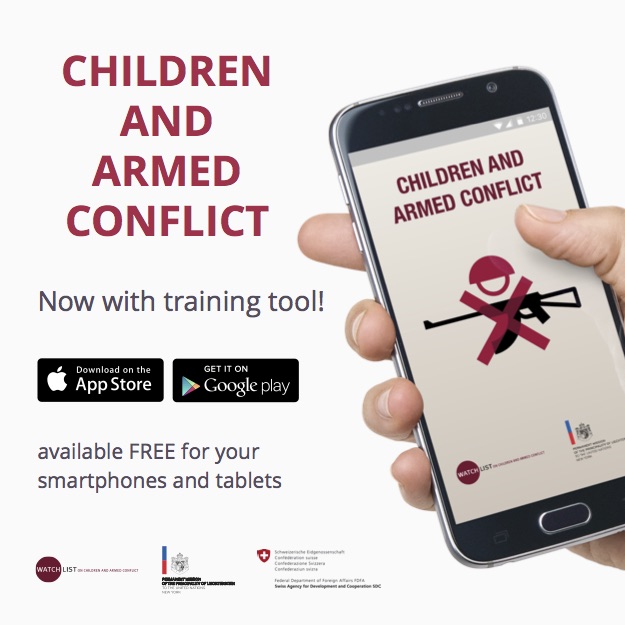On February 12, 2020, the United Nations held a series of events to commemorate the International Day Against the Use of Child Soldiers, also known as Red Hand Day. Watchlist participated in a briefing of the Security Council and a high-level event to launch a new practical guidance for mediators to protect children in situations of armed conflict, underlining the need to include child protection provisions into the peace processes in order to protect children’s rights and ensure durable and sustainable peace.
Throughout the day, the permanent missions of Germany, Belgium, Canada, and Niger, along with World Vision International, the Office of the Special Representative of the Secretary-General for Children and Armed Conflict (OSRSG-CAAC), and Watchlist, hosted an interactive Red Hand Day exhibit. Staff from permanent missions, the UN, civil society, as well as members of the general public, were invited to leave red handprints as a symbol of solidarity with victims of child recruitment and use, and a call to action to end this harmful practice worldwide.
In the afternoon, the Permanent Missions of Belgium and Sweden hosted a high-level event to launch the the new Practical Guidance for Mediators to Protect Children in Situations of Armed Conflict, developed by the OSRSG-CAAC.
Underlining that “child protection issues are mostly addressed in an ad-hoc manner,” SRSG-CAAC Ms. Virginia Gamba presented the new guidance aimed at providing mediators, parties to conflict, and other stakeholders with the necessary tools to promote children’s protection in peace processes and support prevention and mediation efforts at the international, regional, sub-regional, national, and local levels.
Mr. José Tarache, a former child soldier from Colombia his experience representing child victims of the armed conflict during Colombian peace talks. He stressed the importance of providing affected children with the necessary rehabilitation and recognizing their status as victims of serious violations, as well as including provisions to protect children in peace agreements. “The inclusion of these provisions is only valuable, if they are fully implemented,” he added.
Ms. Dragica Mikavica, senior advocacy adviser at Save the Children, spoke about the importance of ensuring child participation in decision-making and peacebuilding and called for a “shift in perception of how mediators view conflict resolution and sustainable peace, moving away from the traditional paradigm to inclusivity.” She underlined that children affected by armed conflict are important participants in reconciliation and recovery.
In addition to the panelists, Member States and civil society representatives gave statements at the event, expressing their support for children affected by armed conflict. In its statement, Watchlist welcomed the practical guidance for mediators and called upon the UN and Member States to broadly disseminate the guidance and encourage its use not only by mediators, but also by UN peace and political missions, regional organizations, civil society, and other stakeholders. Watchlist also highlighted the importance of ensuring full implementation of child protection provisions in peace agreements and accountability for violations, as central foundations for peace.
Following the high-level event, participants moved to the UN General Assembly lobby, for the formal closing of the Red Hand Day exhibit. Mr. Tarache symbolically presented the red handprints to SRSG Gamba, noting that they symbolized the hands of all children affected by war, reaching out for help to end this grave violation.



